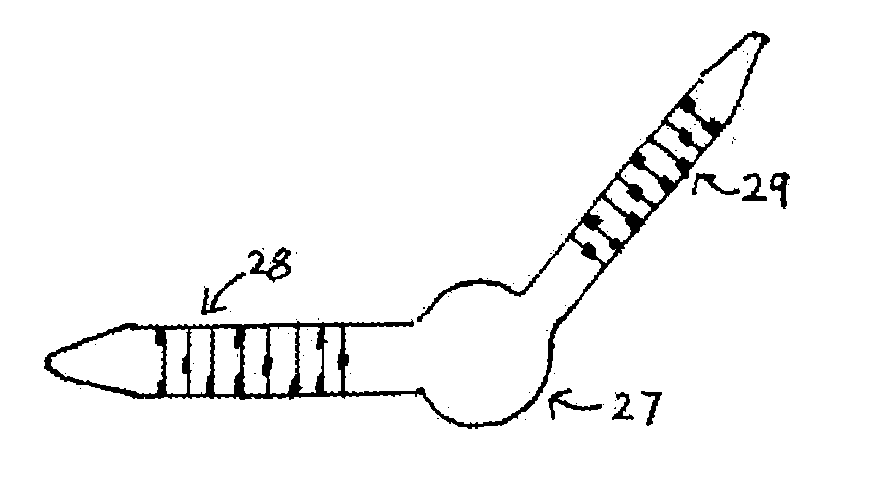Ophthalmic sizing devices
a technology of ophthalmology and sizing device, which is applied in the field of medical devices, can solve the problems of eye brim with tears, eye irritation, and eye irritation, and achieve the effects of reducing the number of eye drops
- Summary
- Abstract
- Description
- Claims
- Application Information
AI Technical Summary
Problems solved by technology
Method used
Image
Examples
Embodiment Construction
[0048]A set of two sizing devices 15a, b is shown in FIG. 4A. Each of these illustrated sizing devices is a tube having a lumen, although alternatively each device could be a solid cylindrical device (not shown), that is, being a device not having a lumen.
[0049]The tube illustrated in FIG. 4A has an easily visible series of marked bands 16 at an end furthest away from the flanged end that prevents it from passing too far down the surgically formed passage and secures it at the inner canthus 1 of the eye when it is in situ.
[0050]The marked bands are useful for determining not just the overall length of the bypass tube to be used in a permanent capacity, but also for determining the flange position for those bypass tubes that incorporate such an internal flange.
[0051]Often the base of these internal flanges is spread over, for example approximately 1.5 mm, its site on the respective bypass tube. To provide a clearer visual impression of where the flange will be relative to the lateral...
PUM
 Login to View More
Login to View More Abstract
Description
Claims
Application Information
 Login to View More
Login to View More - R&D
- Intellectual Property
- Life Sciences
- Materials
- Tech Scout
- Unparalleled Data Quality
- Higher Quality Content
- 60% Fewer Hallucinations
Browse by: Latest US Patents, China's latest patents, Technical Efficacy Thesaurus, Application Domain, Technology Topic, Popular Technical Reports.
© 2025 PatSnap. All rights reserved.Legal|Privacy policy|Modern Slavery Act Transparency Statement|Sitemap|About US| Contact US: help@patsnap.com



